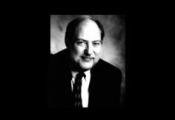Breaking Open Rosh Hashannah
Rabbi Dov Gartenberg
September 22, 2005
When I led services as a pulpit rabbi on the High Holidays I would frequently look over the congregation to take its pulse during the services. At my Conservative congregation I oversaw services that went for hours at a time. What I noticed year after year was that the average staying time for most congregants at the congregation was 1 hour and a half. It was only a few dozen who came at the beginning and left five hours later (on Rosh Hashannah, not to mention Yom Kippur). When I asked people their feeling about services the most common answer was, "It is hard for me to sit in services which are so long, saying words I have trouble believing. I come because I love the melodies and I want to see my friends." Even year after year of teaching the meaning of the traditional prayers, it became apparent to me that the prayer services on Rosh Hashannah remained cryptic for most of those who came to the synagogue.
During this past year as Panim Hadashot took shape, I asked my friends what might be a way to address the problems people have with prayer on the High Holidays. A new idea emerged over several months which pointed to a very different way to connect to this holy season. Prayer is not the sole authentic activity for the New Year. Jews traditionally focused on repairing relationships during this time of year by seeking out friends and loved ones to close up the breaches of the previous year. Jews also made the new year's feast a special time to mark the new year, enjoying symbolic foods with blessings, and reflecting on the changes brought by the previous year. I asked myself, why not make these activities a central focus for Jews who did not easily resonate with the prayer traditions. Why not break open Rosh Hashannah and Yom Kippur by focusing on these other authentic ways of 'doing Jewish' so that people could find a way to reappropriate the holidays in their lives.
So that is what we have done. We are making a beautiful Seder Rosh Hashannah on the first evening. I asked Mary Engel to take this project on. The Engel family has been hosting amazing Rosh Hashannah Seders for years in their home. For Mary the preparation of this seder has become a passionate project. She has gathered together Jewish traditions from around the world to create a 'Rosh Hashannah Haggadah and Seder' of extraordinary beauty and depth. Those attending will not only be treated to distinctive foods and rituals, but also to a Jewish ritual with powerful meaning and insight. Mary plans to publish her seder in the form of a beautiful book which you will be able to use for your own home celebrations in the future.
Moving to the experience of Rosh Hashannah day, I decided to focus on the mitzvah of Teshuvah-'return' which is the central concern of these holy days. Every year rabbis talk about how important it is to repair relationships. What would it mean to focus on this process so that we could launch people into serious engagement with this mitzvah which would impact their lives. I approached John and Julie Gottman and invited them to collaborate with me to make Teshuvah come alive for people. John and Julie know a few things about relationships (they are internationally renowned researchers on marriage). I asked them to join me in reflecting on how the ancient practice of Teshuvah can be meaningful in light of contemporary understanding of relationships. The result is two powerful sessions on Rosh Hashannah and Yom Kippur on making Teshuvah between ourselves, within ourselves, and with God.
The other innovation of Panim Hadashot centers on making learning a communal experience. The Torah readings of the High Holidays are both perplexing and profound. Because of the length of services and the way the Torah service is done in conventional services, these incredible texts remain unexplored for most of us. My aim is to crack open at least two of these great readings, the Binding of Isaac on Rosh Hashannah and the Book of Jonah on Yom Kippur. These passages touch on an important spiritual issue: surrender versus protest. How do we live in the world? How do we regard God? Do we accept reality or do we work against it? Do we submit to God's will or to we assail God's acts? At Panim Hadashot we allow time to explore these questions in the context of the Torah reading and to gather insights on how we might change or validate our lives.
All the above is an attempt to revitalize these Days of Awe as a spiritually powerful and meaningful period in our lives. While I realize that for many Jews the path of prayer is their most direct way to God, Panim Hadashot has tried to open up other paths in the conviction that their are multiple paths to the same God within our tradition. We invite anyone who wants to try a different way or to add to what you already to join us for our unique approach to the High Holidays.
I wish you a Shannah Tovah Umetukah-a good and sweet year.
Rabbi Dov

Subscribe to:
Post Comments (Atom)

1 comment:
Rabbi Dov
Wonderful! The Rosh HaShanah words make sense and the collaborative planning sound so true to the essence of the holiday.
l'Shana tovah from Los Angeles,
JB
9/28/05
(This comment has been transferred from the old blog site to this new blog site.)
Post a Comment